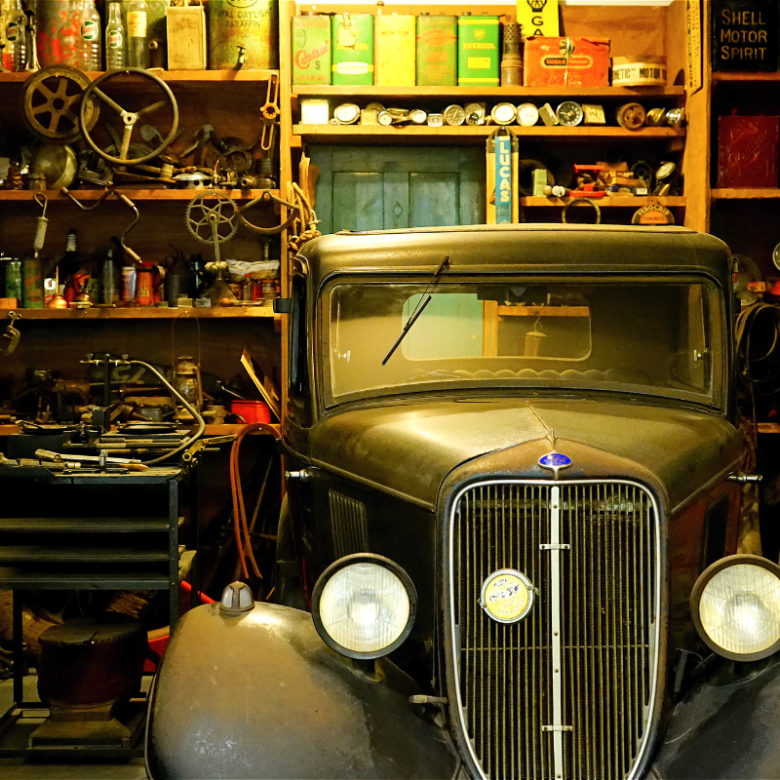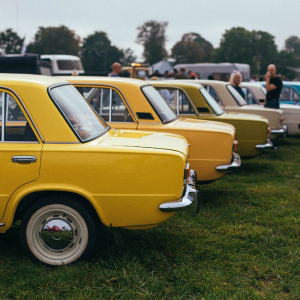Restoring a classic car is a labor of love that requires not only passion and patience but also the right tools. Having the appropriate tools at your disposal can make the restoration process smoother, more efficient, and more enjoyable. In this guide, we’ll cover the essential tools you’ll need for a successful classic car restoration project, from basic hand tools to specialized equipment.
Basic Hand Tools
Before you dive into a restoration project, ensure you have a solid collection of basic hand tools. These tools are the foundation of any restoration work:
- Socket Set: A comprehensive socket set with both metric and SAE sizes is crucial. Look for a set that includes a range of socket sizes, ratchets, extensions, and adapters.
- Wrenches: A set of combination wrenches (open-end and box-end) in various sizes will be indispensable for loosening and tightening bolts and nuts.
- Screwdrivers: A variety of flathead and Phillips screwdrivers in different sizes is essential for working on various components.
- Pliers: Needle-nose pliers, slip-joint pliers, and locking pliers (Vise-Grips) will help you handle wires, clamps, and small parts.
- Hammers: A set of hammers, including a ball-peen hammer and a rubber mallet, is useful for tasks like shaping metal and driving pins.
- Pry Bars: Pry bars of different sizes help with removing parts that are stuck or difficult to reach.
Safety Equipment
Safety should always be a priority when working on a classic car restoration. Make sure you have the following safety gear:
- Safety Glasses: Protect your eyes from flying debris, dust, and chemicals.
- Gloves: Durable work gloves protect your hands from cuts, abrasions, and chemical exposure.
- Hearing Protection: Use earplugs or earmuffs when working with loud tools like grinders or air compressors.
- Respirator or Dust Mask: Protect your lungs from harmful dust, fumes, and paint particles.
Specialized Tools
Certain aspects of classic car restoration require specialized tools. Investing in these tools will make specific tasks more manageable:
- Torque Wrench: A torque wrench ensures bolts and nuts are tightened to the manufacturer’s specifications, preventing over-tightening or under-tightening.
- Engine Hoist: An engine hoist (or cherry picker) is essential for safely removing and reinstalling the engine.
- Jack and Jack Stands: A hydraulic jack and sturdy jack stands allow you to lift and securely support the car for undercarriage work.
- Creeper: A creeper is a low-profile, wheeled platform that lets you comfortably slide under the car for inspections and repairs.
- Multimeter: A multimeter helps diagnose electrical issues by measuring voltage, current, and resistance.
- Brake Bleeder Kit: This tool makes it easier to bleed the brake system and remove air bubbles, ensuring effective braking.
Bodywork and Paint Tools
Restoring the body and paint of a classic car requires specific tools to achieve professional results:
- Sanders: An orbital sander and a block sander are essential for smoothing surfaces and preparing them for paint.
- Paint Sprayer: A high-quality paint sprayer allows you to apply primer, paint, and clear coat evenly.
- Body Filler and Spreaders: These are used to repair dents and imperfections in the body panels.
- Welding Equipment: A MIG welder is ideal for patching rust holes and performing other metalwork.
- Masking Tape and Paper: Essential for protecting areas from overspray during painting.
Interior Restoration Tools
Restoring the interior of a classic car involves its own set of tools to ensure a pristine finish:
- Upholstery Tools: Tools like hog ring pliers, a staple gun, and a seam ripper are essential for reupholstering seats and panels.
- Steam Cleaner: A steam cleaner helps remove deep-seated dirt and stains from carpets and upholstery.
- Trim Removal Tools: These plastic tools help remove interior trim pieces without damaging them.
- Sewing Machine: For custom upholstery work, a heavy-duty sewing machine capable of handling thick fabrics and leather is invaluable.
Miscellaneous Tools and Supplies
Don’t overlook these additional tools and supplies that can be incredibly helpful during a restoration project:
- Lighting: Good lighting is crucial for working in detailed areas. Consider portable work lights and headlamps.
- Lubricants and Cleaners: Penetrating oil, brake cleaner, and degreasers are essential for loosening rusted parts and cleaning components.
- Storage Bins and Labels: Organize nuts, bolts, and small parts with storage bins and labels to keep your workspace tidy and efficient.
- Measuring Tools: Calipers, tape measures, and rulers help ensure accuracy in your work.
Conclusion
Restoring a classic car is a complex but immensely rewarding project. By equipping yourself with the right tools, you’ll be well-prepared to tackle each stage of the restoration process with confidence and precision. Investing in quality tools not only makes the job easier but also ensures better results and a more enjoyable restoration experience. Whether you’re working on your first restoration or are a seasoned veteran, having these essential tools at your disposal will help you bring your classic car back to its former glory.

